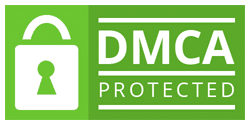3196
Background
You are a manager in the audit division at Miller Yates Howarth (MYH), an accounting firm with offices throughout the major regional centres of NSW and Queensland. Although a medium sized firm by national standards, MYH is the second largest regional accounting firm in Australia. Most of MYH’s audit clients are in the agriculture, mining, manufacturing and property industries. All those industries are currently under pressure, either from a downturn in commodity prices or fierce competition from overseas competitors. Ratios extracted from an unaudited set of financial reports at 30 June 2018 together with audited comparatives for the year ended 30 June 2017 and 2016 are set out below for your review.
You are gathering information to prepare the audit plan of Trunkey Creek Wines Limited for the year ended 30 June 2018. Trunkey Creek Wines (TCW) is one of MYH’s most significant and longstanding clients. The following information has been gathered to date.
Principal activities of TCW
• growing grapes for wine production;
• production and distribution of red, white and sparkling wines;
• beef cattle production on land surplus to grape production; and
• investment of surplus funds.
TCW was originally a family company incorporated in 1968 and has operated successfully and profitably since that date. In the 1990’s shares were sold to a small number of investors to increase funds for the development and upgrading of the winery and the purchase of additional land for the vineyards. Insufficient rainfall had meant that some land was no longer suitable for wine grape production, as a result, TWC moved into Wagyu beef cattle production on this surplus land. The Wagyu operation is now starting to return a profit.
TWC now find that the 2 degrees increase in temperature at some vineyards is affecting the production of sparkling wine and are now looking at purchasing land in cooler climates. TWC has built up a strong following for their sparkling wine which earns significant profits in both domestic and overseas markets. TWC are currently negotiating the land purchase and part funding in part from medium term bank loans. The remaining purchase price will be sourced from surplus funds.
The Wagyu beef is sold through the Wagyu Selling Group (WSG) in which TWC has shares. These shares form a material part of TWC’s investment portfolio. WSG buys, butchers and sells the Wagyu beef to high end domestic restaurants and regularly sends frozen shipments to Japan and China. TWC are heavily marketing their pinot, both domestically and overseas, as a perfect accompaniment to the Wagyu beef.
The directors of TCW are:
- Mrs Claire Harewood, Chairman. Mrs Harewood has significant experience in the industry and replaced her husband as chair when he died 10 years ago.
- Mr Phillip Strange, Chief Executive Officer
- Mr. Joe Quade
- Mr Steven Harewood, son of Claire Harewood and has oversight of the Wagyu beef operation
- Dr Mary Owens
- Ms Hilary Jones
- Mr Geoffrey Owens
Your audit partner, John Richards, has approached you and advised that there are several areas he is concerned about and he wants to you to report back to him about these areas before you complete your audit program. These areas and accounts are:
• Accounts receivable
• Investments
• Property assets
• Marketing expense
Ratio
2018 (Unaudited)
2017 (Audited)
2016 (Audited)
Return on equity %
10.80
17.5
15.2
Return on beef production assets %
1.67
-0.82
-3.45
Return on grape and wine production assets %
12.2
14.5
16.2
Gross margin %
24.5
30.00
31.76
Net profit margin %
14.38
20.27
17.85
Marketing expense % of total S & A expenses
23.67
17.89
15.2
Times interest earned
6.67
7.51
8.10
Days in inventory – wine
367
423
460
Days in accounts receivable – wine
50.2
60.65
53.24
Days in accounts receivable – beef
57
36
24
Current ratio:1
2.80
2.54
2.66
Quick asset ratio:1
1.18
1.15
1.20
Debt to equity ratio:1
0.54
0.63
0.67
Internal control
The financial controller at TCW has been refining the system of internal controls and informs you, at the planning stage of the current year’s audit, that he has put together an internal control manual for the company. He has stated that this manual will create greater awareness of controls in the company, particularly with management which, in the past, has not been overly conscious of the need to implement and enforce effective internal controls.
Management staff receive bonuses based on certain agreed-upon target ratios which include measures such as targeted monthly sales volumes, variance of actual to budget departmental overheads and profit before interest and tax. The Board takes an active interest in the performance of the company and is quick to request explanations on variances from the agreed-upon monthly budgets.
Two years ago, the company devoted significant time and resources to the development and implementation of a new IT system. All teething problems associated with the implementation phase have now been resolved, and the financial controller is satisfied that the automated controls in place are assisting in producing accurate and complete accounting records. The management accountant also looks after the IT function as the position is not regarded by management as being a full-time job. Once application programs have been tested, strict password control exists over access to the programs. Passwords are not required for access to databases.
To assist in the planning for the current year’s audit engagement, you extracted the following information from a review of the systems notes in the permanent file and a perusal of the new internal control manual:
- There are three section managers, one each for grape production, wine production and beef production. Each can order supplies for their respective operations up to a limit of $10,000 for each order. Orders between $10,000 and $30,000 must be approved by the management accountant. Orders over $30,000 must be approved by the CEO. Orders over $50,000 must be approved by the Board.
- Orders must be made through the computer ordering system which has direct links to the approved suppliers.
- Supplier information is contained in a supplier master file. Each supplier has a unique supplier code. If a section manager orders from an unapproved supplier, the order is rejected and sent to the management accountant for approval.
- The supplier information file is maintained by the accounts clerk. Changes to the file are approved manually by the management accountant.
- When supplies are received at the winery, the storeman checks the supplies received to the online copy of the order and the delivery docket provided by the supplier. Any discrepancies are noted on the online copy of the order.
- The delivery docket is filed by the storeman in a folder that is kept at the winery.
- The invoice is received electronically from the supplier and matched to the order by the accounts clerk. If the order and the invoice match the invoice is included in a payments file.
- The payments file is approved online by the management accountant once a week and used to generate an ABA file which is then uploaded to the bank by the management accountant.
- When the payments file is approved by the management accountant, the invoice is automatically recorded as being paid in the accounting system.
- When services such as repairs are ordered for the winery by the wine production manager, a service order is generated within the computer system and automatically sent to the service provider.
- When the service has been delivered, the wine production manager or the storeman signs the service delivery docket on the service man’s tablet.
- The invoice from the service company, with a copy of the signed service delivery docket, is received online by the accounts clerk.
- The accounts clerk checks the signed service delivery docket to the invoice and the order and adds the invoice to the payments file for final approval by the management accountant.
- In the case of discrepancies, the accounts clerk contacts the supplier and the wine production manager to resolve the issue. Payments are not made until the issue has been resolved.
Required
Write a report, including a brief executive summary, to your managing partner that addresses the questions below. Where indicated, use the required format to answer that question.
Question 1A 8%
Analyse the ratios and additional information associated with the four accounts listed by your audit partner, John Richards. Identify the potential audit risks and any audit steps that need to be undertaken to reduce audit risk.
Answer this question using the following table:
Account
Analysis
Audit Risk
Audit Steps to reduce risk
Question 1B 2%
Analyse the ratios and additional information to outline business risks that TWC faces.
Question 2A 7%
Identify the internal controls in the system that are potentially effective, the risk that the control could alleviate and one test of control for each of the identified potentially effective controls.
Answer this question using the following headings:
Effective control
Risk alleviated
Test of control
Question 2B 2%
List and justify the weaknesses in internal control for purchases and accounts payable.
Weakness
Justification





